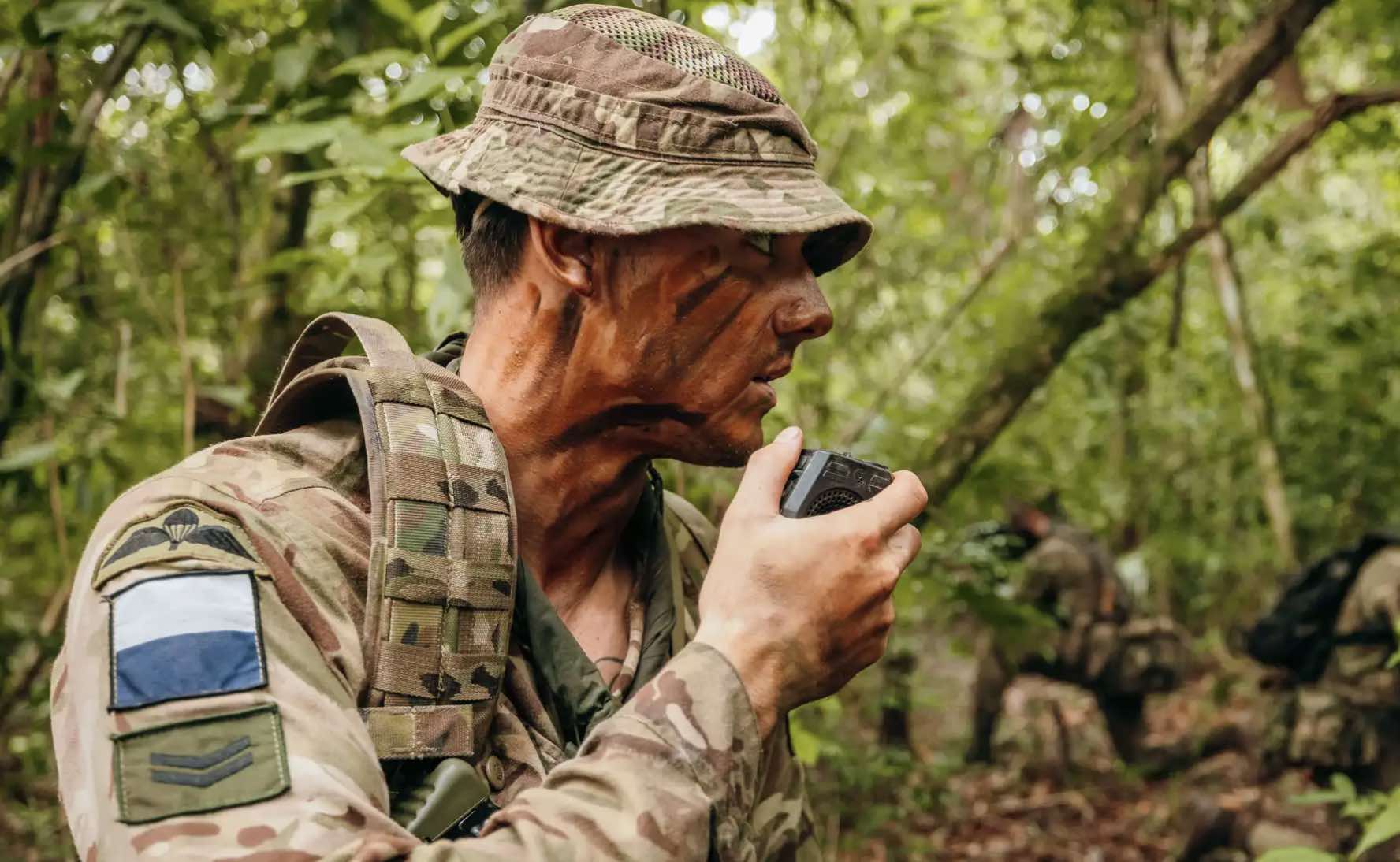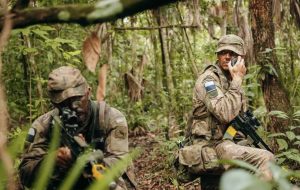


But it wasn’t one of assault or rescue. Instead, they were testing the next generation of radio communications equipment in some of the most hostile terrain on the planet. According to the official report from the British Army, this cutting-edge kit “…will let soldiers on the frontline talk and share information securely with commanders, even from thousands of miles away.”

The significance of this exercise should not be underestimated. In an era of evolving threats and dispersed theatres of war, the ability to communicate reliably, securely and flexibly underpins everything from precision operations to global deterrence.
It is not just equipment—it is the backbone of operational success. And the British Army is making sure it will not be caught on the back foot.
Belize, with its oppressive humidity, tangled vegetation and signal-blocking canopy, was chosen for a reason. As the Army notes, the jungle is “one of the toughest places to test electronic equipment”. Temperatures soar, moisture permeates every crevice, and radio waves struggle to penetrate vines, trees and swampy ground. Here, the soldiers of 216 Signal Squadron were paid to sweat—not just physically, but operationally—working with the new kit to find its limits and refine its resilience.
Corporal Harry Umpleby summarised the experience: “When you’re under the jungle canopy, it’s a different world. Visibility and movement are restricted … you’ve really got to be on top of looking after yourself and your kit.” That keen recognition of the environment’s demands points to a deeper truth: technology alone is not enough. It must be field-proven, under pressure, in the harshest places.
The big leap forward comes in the form of a system called “Project Cain”, which incorporates MPU5 radios and a mobile ad-hoc network—or MANET. In lay terms: individually carried radios that link together in a mesh network, capable of re-routing around failures and keeping communications alive even when links drop out. These devices allow soldiers to carry less kit but transmit more data—videos, maps, voice, and position info—to commanders at pace.
Major Ben Salero, Officer Commanding 216 Signal Squadron, put it succinctly: “Communicating over a MANET network means carrying less kit but being able to do more communications by voice and data.” The implications ripple outward. Streamlined kit means lighter loads in the jungle. Faster data means better decisions in the field. Mesh networking means fewer single points of failure. And all of this increases situational awareness—which is the modern battlefield’s currency.
This exercise is not about Belize for its own sake. The brigade involved is kept at “very high readiness to respond to global crises”. The message is clear: if the system works amid swamp and vine, it can work anywhere. Whether in arid deserts, Arctic tundra or congested urban zones, the equipment’s robustness in jungle testing offers a guarantee of performance across environments.
That taut readiness matters. In a world of unpredictable conflicts, rapid deployments and dispersed operations, having communications that collapse or stutter is not just an inconvenience—it is a liability. The modern soldier must be connected, the commander must be aware, and the network must not fail.
From a wider perspective, these trials reflect the British Army’s shift from quantity to quality. The era of heavy blanket forces is giving way to lighter, smarter, more networked formations. Communications—once an afterthought—are now central to force design. This signals a broader transformation of the Army’s thinking: the next war may not be fought by massed armoured divisions, but by agile, well-coordinated team-sets supported by persistent connectivity.
For Britain, the capability is also a mark of prestige. In an era of defence austerity and global competition, demonstrating that its forces can innovate, deploy and operate sophisticated kit in testing conditions is meaningful. It reassures allies, deters adversaries and strengthens the UK’s role in coalition operations.
What stands out in the report is the emphasis not just on the technology, but on the human factor. The soldiers did not only carry new radios. They learned to build shelters, find water, navigate the jungle and manage all the distractions that come with operating in such terrain. These aren’t training gimmicks—they are the gritty truths of modern deployment. The kit must work—but so must the soldier.
Major Salero’s comment underlines this: “We’ve been working with the radios to understand how to use them to best suit our needs, and testing kit in the jungle will give us confidence that it will work wherever we want to use it.” Confidence is a key word. In high-stakes missions, uncertainty kills; confidence saves.
The new system is scheduled for introduction early in 2026 for the brigade. That marks a tangible timeline. It is not distant speculation—it is a near-term reality. Once in service, the radios will enhance the brigade’s capability for expeditionary operations, interoperability with allies and resilience in degraded communications conditions.
It is a positive signal. For soldiers on the ground, for planners in Whitehall, and for the country as a whole, this kind of visible modernisation provides reassurance. That even as the world grows more complex, Britain’s armed forces are keeping pace.
In an era of shifting threats—from peer competitors to tactical insurgencies—the importance of communications cannot be overstated. The jungle training in Belize may sound exotic, but it encapsulates a central truth: the best kit is useless without operational proof. Britain’s signallers did not just test new radios; they subjected them to jungle-grade trials to ensure performance, reliability and readiness.
When soldiers can talk clearly, commanders can decide swiftly, and operations can proceed with certainty. That is modern warfighting. And Britain’s Army is choosing to lead that frontier rather than be caught behind it.
In the heat, humidity and unforgiving terrain of the jungle, Britain’s signal troops proved one thing: Britain’s forces will not be left out of the signal age. They will be in the network. They will be ready. And they will not be surprised by anything.